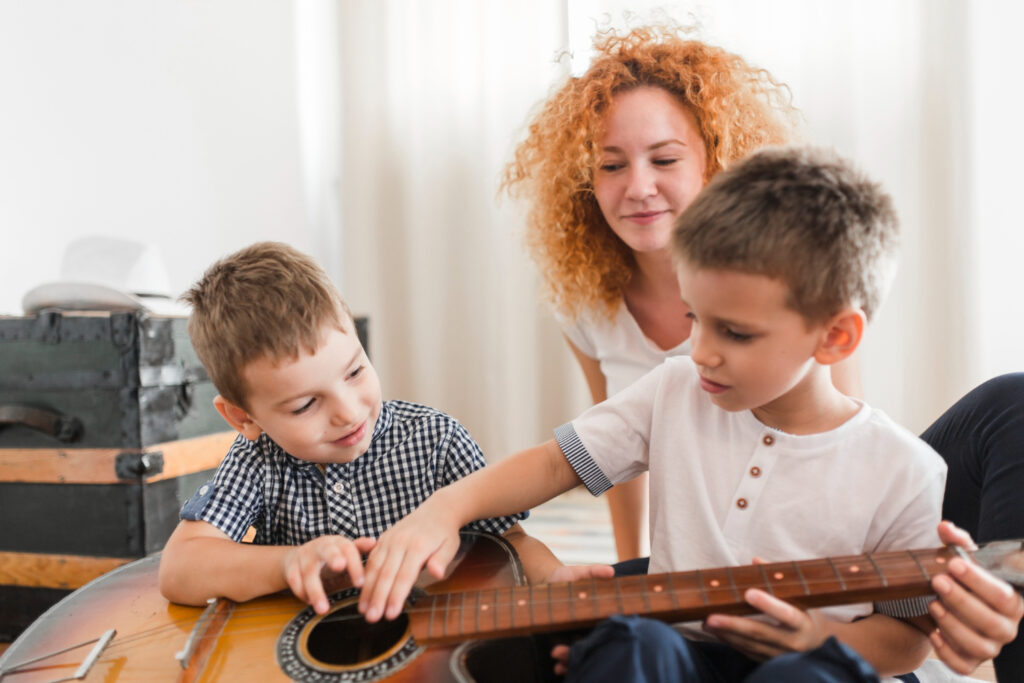Music has a profound ability to engage and connect with people, especially children with Autism Spectrum Disorder (ASD). For children on the spectrum, music therapy offers more than just enjoyment—it can support emotional, cognitive, social, and sensory development. At HOPE Centre for Autism, we believe that music therapy plays a crucial role in enhancing communication and promoting self-expression. Let’s explore how music therapy benefits children with autism and ways parents can incorporate it into daily life.
What is Music Therapy?
Music therapy is an evidence-based practice where trained therapists use music to achieve specific developmental goals. It can involve activities such as singing, playing instruments, listening to music, or moving to rhythms. For children with autism, the sensory, auditory, and emotional elements of music can facilitate engagement in ways that other therapies may not.
Key Benefits of Music Therapy for Kids with Autism
1. Improves Communication Skills
Many children with autism struggle with verbal communication. Music therapy offers a non-verbal way to connect, using sounds, rhythms, and melodies to build expressive and receptive communication skills.
- Singing songs can help children learn new words and develop language patterns.
- Rhythmic clapping or drumming fosters turn-taking, a fundamental communication skill.
2. Reduces Anxiety and Enhances Emotional Regulation
Music can be calming for children with autism, helping them manage stress and anxiety. Rhythmic patterns can have a soothing effect, and playing an instrument offers a way to release pent-up emotions.
- Soft, repetitive melodies create a sense of predictability, which reduces anxiety.
- Therapists use specific musical activities to teach children how to recognize and regulate emotions.
3. Enhances Social Skills and Interaction
Music therapy encourages social interaction by engaging children in group activities, such as singing or playing instruments together. These interactions promote:
- Eye contact
- Joint attention (sharing focus with others)
- Collaboration and teamwork
At HOPE Centre for Autism, we’ve seen how group music sessions can help children learn essential social skills in a fun and non-threatening environment.
4. Stimulates Sensory Integration
Many children with autism experience sensory processing challenges, and music therapy offers a multi-sensory experience. The combination of sound, touch (through instruments), and movement helps children become more comfortable with sensory input.
- Drumming or playing a xylophone provides tactile input.
- Dancing to music offers vestibular and proprioceptive input, helping children develop body awareness.
5. Promotes Cognitive Development
Music therapy can boost cognitive functions such as memory, attention, and problem-solving. Children learn to recognize patterns and sequences, which strengthens cognitive skills.
- Singing songs with repetitive verses improves memory.
- Playing instruments develops focus and coordination.
How Music Therapy Works at HOPE Centre for Autism
At HOPE Centre for Autism, we integrate music therapy into our customized treatment plans. Our therapists use music-based activities to complement other therapies, such as speech therapy and occupational therapy. Each child’s musical interests and developmental needs guide the sessions.
A Typical Music Therapy Session May Include:
- Singing familiar songs to encourage participation.
- Improvisation with instruments, allowing children to express emotions creatively.
- Movement activities, such as clapping or dancing to rhythms.
- Listening exercises to improve focus and auditory processing.
Our team monitors progress by observing how children respond to music therapy over time and adjusts activities based on their developmental goals.
Tips for Parents: Incorporating Music into Daily Life
Parents can extend the benefits of music therapy by incorporating music-based activities at home. Here are some ideas:
- Sing during routines: Use songs to signal transitions, such as bedtime or mealtime.
- Create a musical routine: Dedicate a specific time for music play, allowing your child to explore instruments or favorite songs.
- Use playlists: Create calming playlists for moments of stress or sensory overload.
- Dance together: Movement to music encourages bonding and develops motor skills.
- Introduce simple instruments: Instruments like shakers, tambourines, or keyboards provide sensory stimulation.
Research Supporting Music Therapy for Autism
Research shows that music therapy can significantly improve outcomes for children with autism. A study published in the Journal of Autism and Developmental Disorders found that children who participated in music therapy demonstrated better communication and emotional regulation compared to those who did not. Similarly, music-based interventions have been shown to enhance social interaction and reduce behavioral challenges.
Conclusion
Music therapy is a powerful tool for supporting children with autism. From improving communication to enhancing emotional regulation, the benefits of music therapy are far-reaching. At HOPE Centre for Autism, we see music as a bridge that helps children connect with the world around them, express their emotions, and develop essential skills.
If you’re interested in learning more about how music therapy can benefit your child, contact HOPE Centre for Autism today. Together, we can create a harmonious path for your child’s growth and development.
